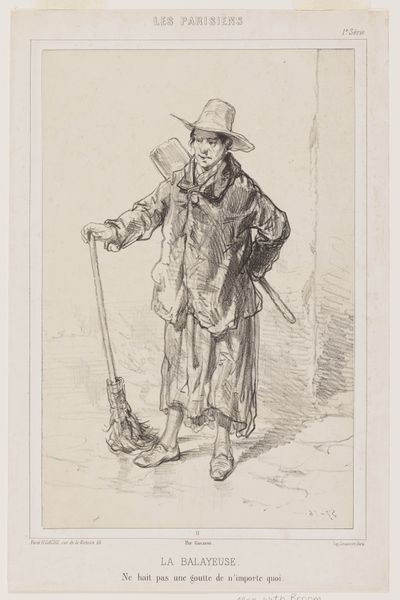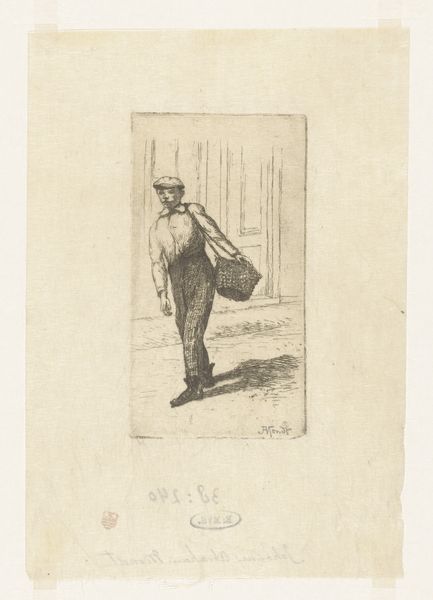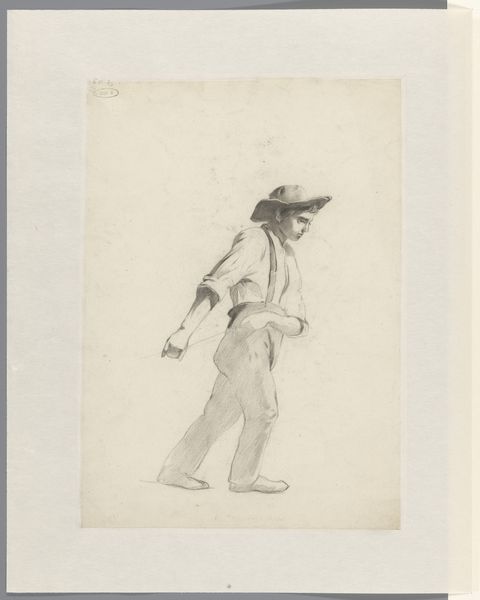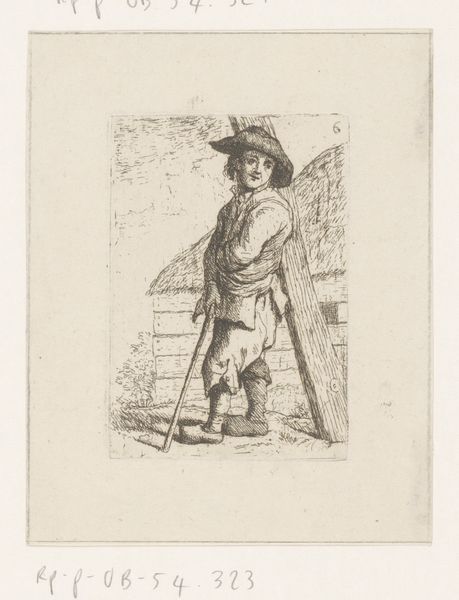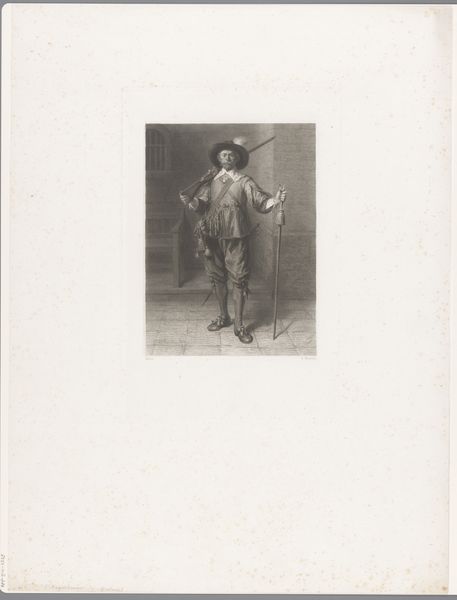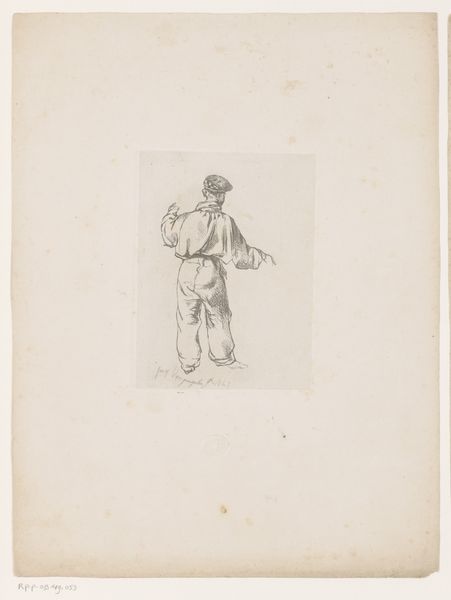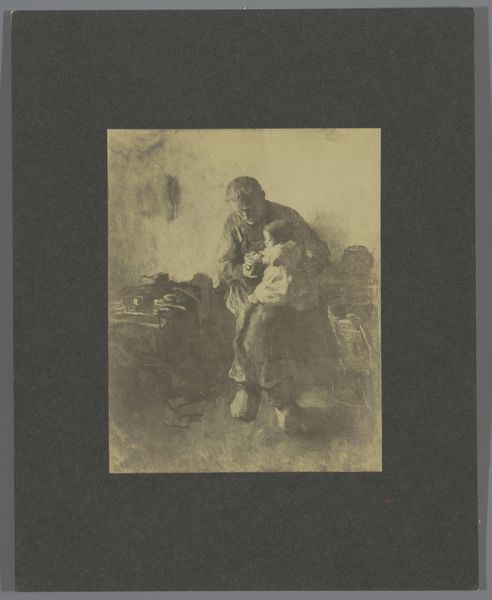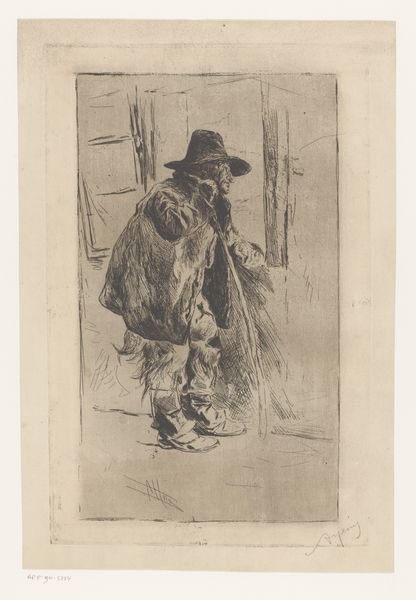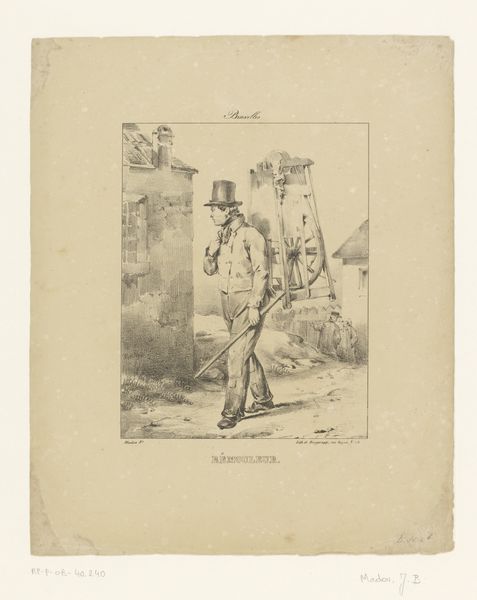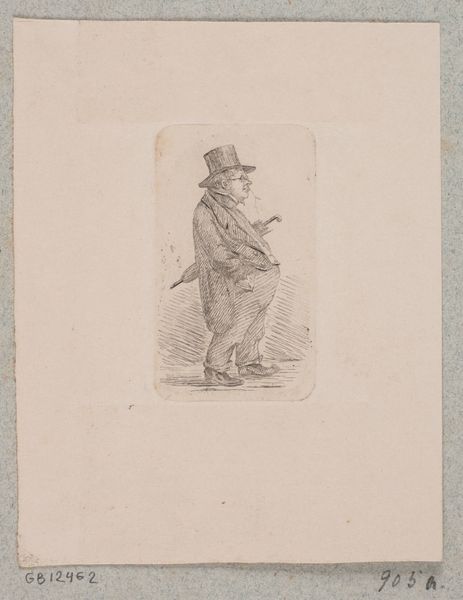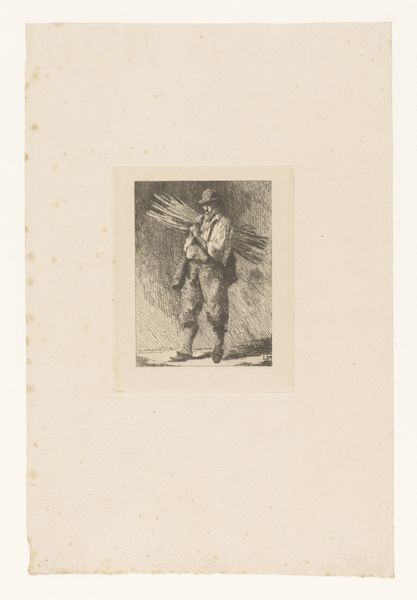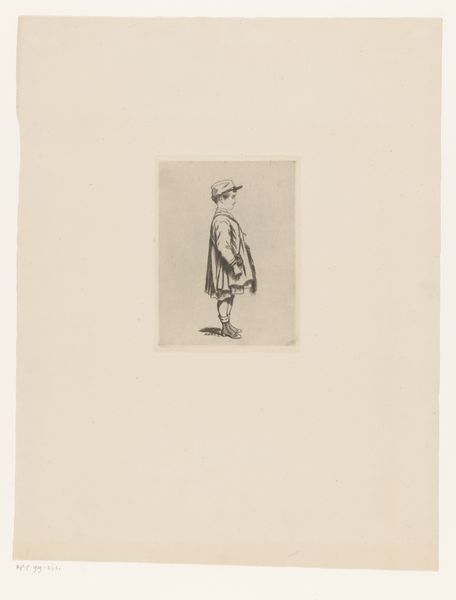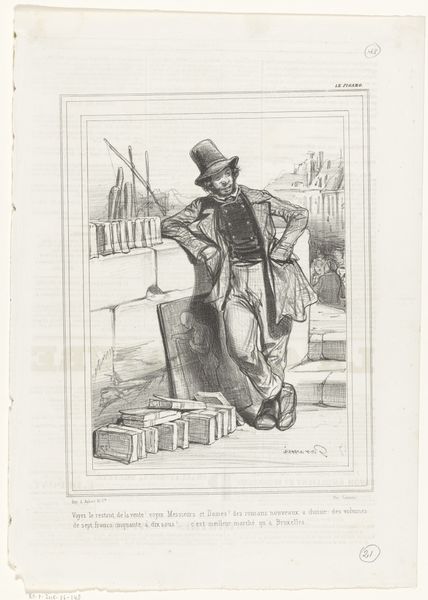
drawing, pencil
#
drawing
#
pencil sketch
#
landscape
#
pencil
#
15_18th-century
#
watercolour illustration
#
genre-painting
#
watercolor
#
rococo
Dimensions: height 104 mm, width 67 mm
Copyright: Rijks Museum: Open Domain
Curator: Here we have Caspar Jacobsz. Philips's "Zwerver bij een kruiwagen," a pencil drawing from 1767. It resides here at the Rijksmuseum. Editor: It’s somber, isn’t it? There’s a palpable sense of weariness radiating from this figure. His slouch, the muted colors… it speaks of a difficult existence. Curator: Absolutely. Consider the broader social context. Philips created this piece during a period of economic hardship for many. Images like this offered a glimpse into the lives of those struggling on the margins of Dutch society. The “Zwerver,” the wanderer, becomes a symbol, a witness to that struggle. Editor: That hunched posture… to me, the downcast eyes say even more. It echoes images of the Prodigal Son in a strange way – a humbling. Do you think the wheelbarrow itself might act as some symbol of labor or perhaps of burdens carried? Curator: Undoubtedly. Wheelbarrows, like plows and other tools, often appear as emblems of toil in genre paintings. The iconography connects the figure directly to the world of manual labor, a world often romanticized but undoubtedly challenging. Philips seems to acknowledge the labor’s human cost. The sketch is Rococo. It focuses on light and shade to amplify an idealized theme. Editor: Yet it's more intimate, more human than simply celebratory. You can practically feel the texture of his worn clothing, the weight of that unseen load in the wheelbarrow. Curator: Precisely. This drawing participates in the then-contemporary vogue for genre scenes. The rise of a middle-class art market fueled interest in depictions of everyday life. Artists responded by portraying both idealized visions and sympathetic representations of those often overlooked. Editor: And what about the use of pencil and watercolour together? What does this particular selection of materials contribute to our viewing? Curator: The subtlety and softness achieved by the pencil sketch, enhanced by watercolor, adds a gentleness to the character, highlighting how poverty can steal strength and joy from a person. Editor: That blend makes a statement. It lends humanity, wouldn’t you say? It rescues him from being simply an icon of suffering. Curator: Well put. The work underscores the importance of visual art not just for aesthetic pleasure, but also as a window into the human condition across time. Editor: I see it now, the image makes me think deeply about those who toil and go largely unnoticed and reflects on our own responses toward such difficult truths.
Comments
No comments
Be the first to comment and join the conversation on the ultimate creative platform.
